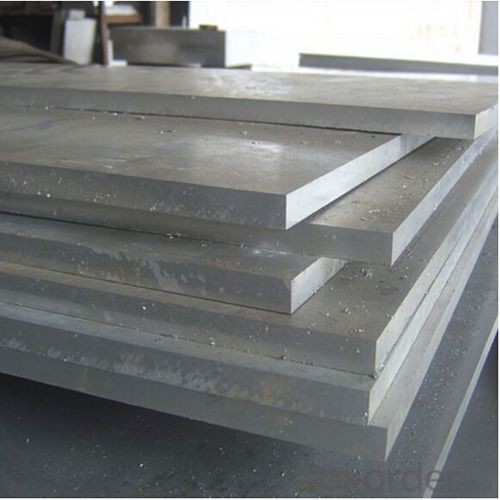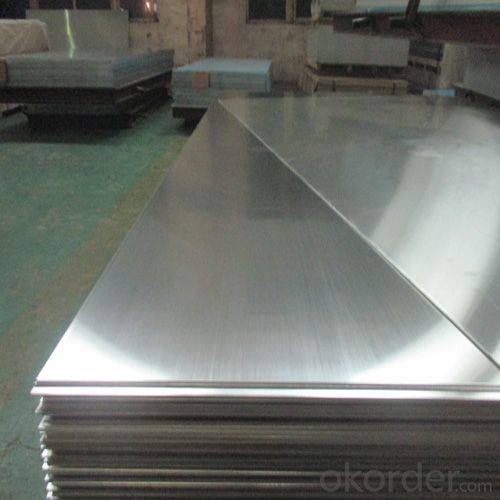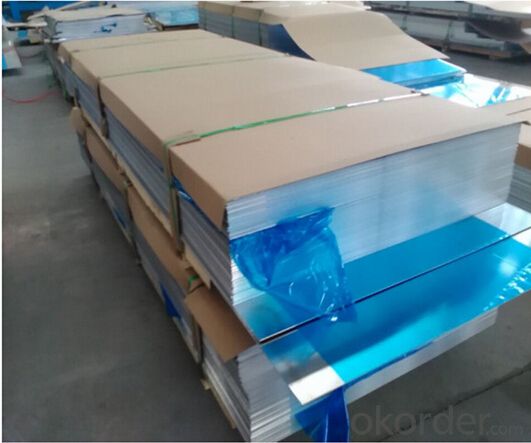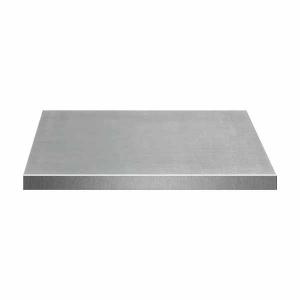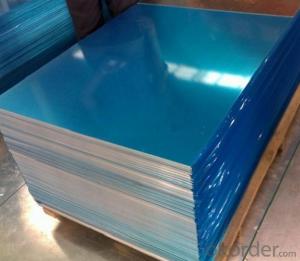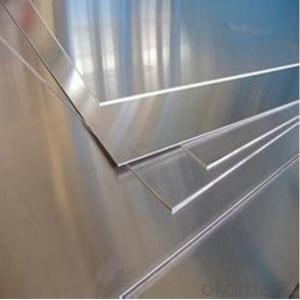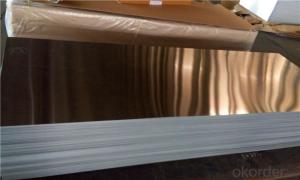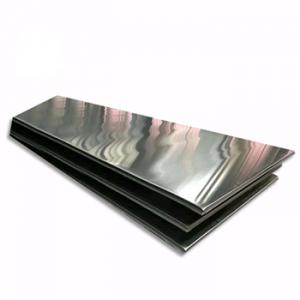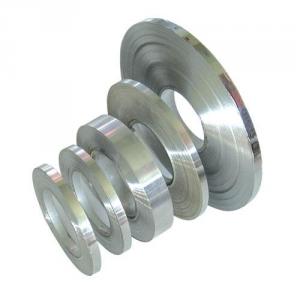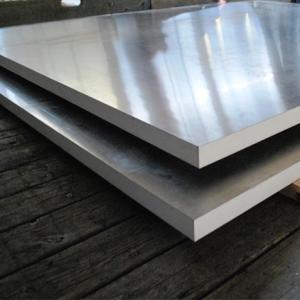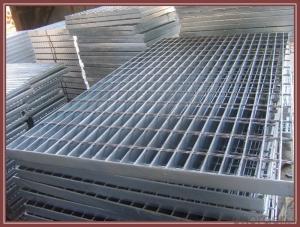Aluminum Honeycomb Sheets 6061/6082-T6 for Mould - Aluminum Alloy Plate
- Loading Port:
- Shanghai
- Payment Terms:
- TT OR LC
- Min Order Qty:
- 5 m.t
- Supply Capability:
- 10000 m.t/month
OKorder Service Pledge
OKorder Financial Service
You Might Also Like
Specification
1.Structure of Aluminum Alloy Plate 6061/6082-T6 for Mould Description:
The alloy 6061 has very good welding characteristics and may be welded by all of the common welding techniques. Gas tungsten arc welding is generally used for thin sections and gas metal arc welding is used for heavier sections.Commonly used in the manufacture of heavy-duty structures requiring good corrosion resistance, truck and marine components, railroad cars, furniture, tank fittings, general structural and high pressure applications, wire products, and in pipelines.
2.Main Features of Aluminum Alloy Plate 6061/6082-T6 for Mould:
Good mechanical properties.
Easy processing, wearability.
Corrosion resistance
Resistance to oxidation.
3. Aluminum Alloy Plate 6061/6082-T6 for Mould Images:
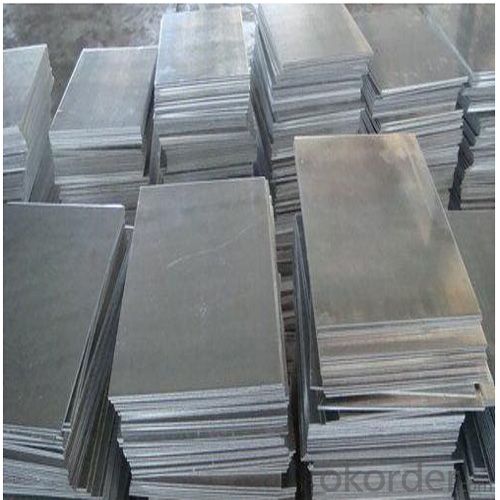
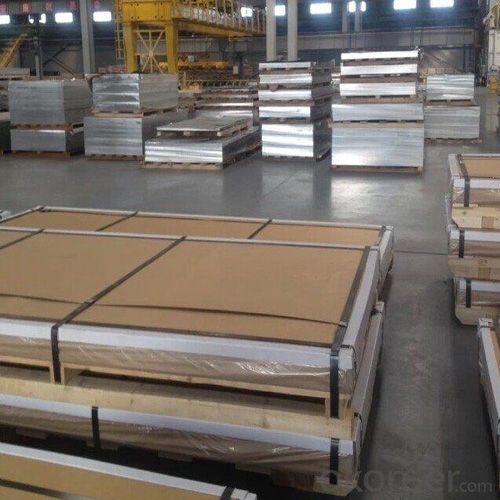
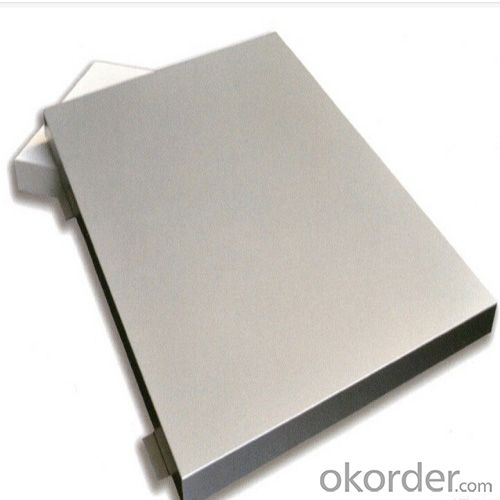
4. Aluminum Alloy Plate 6061/6082-T6 for Mould Specification:
| Aluminium sheet | |||||
| Alloy No. | Thickness (mm) | Width (mm) | Length (mm) | Temper | |
| A1050,A1060, A1070,A1100 | 0.2-100 | 20-2200 | 20-8000 | O,H12,H22,H14,H16,H18, H24,H26,etc | |
| 3A21,A3003,A3105,A3004 | 0.2-100 | 20-2200 | 20-8000 | O,H14,H18,H24,etc | |
| A5052 ,A5005,A5083,A5754 | 0.2-100 | 20-2200 | 20-8000 | O,H18,H24,H32,H34,H111,H112 ,etc | |
| A6061,A6082,A6063 | 0.2-200 | 20-2200 | 20-8000 | T4,T6, T651,etc | |
| A8011 | 0.2-100 | 20-2200 | 20-8000 | O,H12,H22,H14,H16,H18,H24,H26, etc | |
5.FAQ
Q1.How long have you been in this product?
A1:More than 10 years.
Q2. What's the minium quantity(MOQ)?
A2. 5 Metric tons
Q3. How long is shipping time?
A3. 7 (ready-made products)-25 days(OEM)
Q4. How do you guarantee the quality?
A4. 1. Cooperating and Exchaning experience with sevral quoted aluminum companies
2. Japanese and Swiss production line and skilled works (regular training and testing)
3. more than 10 years production experience.
Q5. Do you have after sale service?
A5. Yes. Any quality problem occurs within one year, pls take photoes,we will be responsible.
- Q: How does the thickness of aluminum sheet affect its formability?
- The thickness of an aluminum sheet directly affects its formability. Thinner sheets are generally more flexible and easier to bend or shape, making them more formable. On the other hand, thicker sheets are less malleable and require more force to bend or form, resulting in reduced formability.
- Q: What are the different types of finishes used for decorative aluminum sheet?
- The different types of finishes used for decorative aluminum sheet include brushed, polished, anodized, embossed, and powder coated finishes.
- Q: What is the electrical resistivity of aluminum sheets?
- The electrical resistivity of aluminum sheets is approximately 2.65 × 10^-8 ohm·meter.
- Q: Can the aluminum sheets be used for manufacturing aircraft engine components?
- Yes, aluminum sheets can be used for manufacturing aircraft engine components. Aluminum is a commonly used material in the aerospace industry due to its excellent strength-to-weight ratio and corrosion resistance. It is lightweight, yet strong enough to withstand the stresses and high temperatures associated with aircraft engines. Additionally, aluminum sheets can be easily fabricated, making them suitable for producing intricate engine components. Overall, aluminum sheets are a preferred choice for manufacturing aircraft engine components due to their favorable mechanical properties and suitability for aerospace applications.
- Q: the coil is wrapped around the aluminium pipe will it effect the efficiency of the coil gun ?
- Yes, it absorbs most magnetic force generate by coil and turns it into useless current .
- Q: What is the typical yield strength of aluminum sheets?
- The typical yield strength of aluminum sheets can vary depending on the specific alloy and temper, but it typically ranges from 15,000 to 40,000 psi (pounds per square inch).
- Q: I have a problem when machining aluminium in my machine shop. There are times when the machines aluminium surface turns yellowish (somtimes brown). I do not know what is the main cause of the problem. Is it due to the coolant used?
- Aluminum oxides may appear in different colors depending on hydration states and other variables. Look in a CRC Handbook of Chemistry Physics if available for aluminum compounds and their colors. The colors that you see may also have as much to do with the surface finish as the color of the material on the surface. A microscopically rough surface will appear dark next to a polished surface due to light scattering. I will agree with Ling in principle, but not on details. EDS detection limits on homogeneous samples can be better than 0.1%, although not so good for elements at the light end of the detection range. Current detectors can detect chlorine (a common culprit for aluminum discoloration) at about 0.1%. Your problem with detection and one that Ling has addressed previously may be that a thin film of contamination would not be easily detected by EDS. As Ling suggests, SIMS is a good technique for detecting thin films and low concentrations. The problem with SIMS in this case may be that the detection limits are too good and the technique cannot be quantified. SIMS would detect 2 ppm of chloride and you couldn't tell for sure whether it was 2 ppm, which is probably not an issue here, or 2000 ppm, which would be significant. I would suggest x-ray photoelectron spectroscopy (ESCA or XPS) as an alternative for further study. The technique will analyze thin films (20 A) and detection limits are good enough (about 0.1%). In addition, XPS will give you information about the compounds present, e.g. whether the oxygen is aluminum oxide, aluminum hydroxide, etc. Good Luck.
- Q: Hi,I need some interesting facts about AluminiumLike who found/discovered it, and how, or/and history of it. Recycling it, or does it have effects on the environment,Thanks if you can help,Thank you thank you thank you!Xx
- Aluminium is remarkable for the metal's low density and for its ability to resist corrosion due to the phenomenon of passivation. Structural components made from aluminium and its alloys are vital to the aerospace industry and are very important in other areas of transportation and building. Its reactive nature makes it useful as a catalyst or additive in chemical mixtures, including ammonium nitrate explosives, to enhance blast power. all the ifo u need isat the link below
- Q: What specific tools or equipment are required when working with aluminum sheets?
- <p>When working with aluminum sheets, you'll need a few special tools and equipment. These include sheet metal shears for cutting, a metal file for smoothing edges, a metal straight edge for measuring and marking, and a vise for holding the sheet securely. For bending, a sheet metal brake is essential. Safety gear such as gloves and goggles are also crucial to protect against sharp edges and debris. Additionally, a T-square and a marker are needed for precise measurements and markings.</p>
- Q: What is aluminum sheet?
- Aluminum sheet refers to a flat, thin piece of aluminum that is commonly used in various industries and applications. It is produced by rolling aluminum ingots between large rollers to achieve the desired thickness. Aluminum sheets are lightweight, durable, and have excellent corrosion resistance, making them suitable for a wide range of uses. They are commonly used in the construction industry for roofing, siding, and insulation purposes. Additionally, aluminum sheets are widely used in the automotive, aerospace, packaging, and electrical industries due to their high conductivity and ability to be easily molded into different shapes. Overall, aluminum sheets are versatile and highly sought after for their strength, flexibility, and aesthetic appeal.
Send your message to us
Aluminum Honeycomb Sheets 6061/6082-T6 for Mould - Aluminum Alloy Plate
- Loading Port:
- Shanghai
- Payment Terms:
- TT OR LC
- Min Order Qty:
- 5 m.t
- Supply Capability:
- 10000 m.t/month
OKorder Service Pledge
OKorder Financial Service
Similar products
Hot products
Hot Searches
Related keywords



